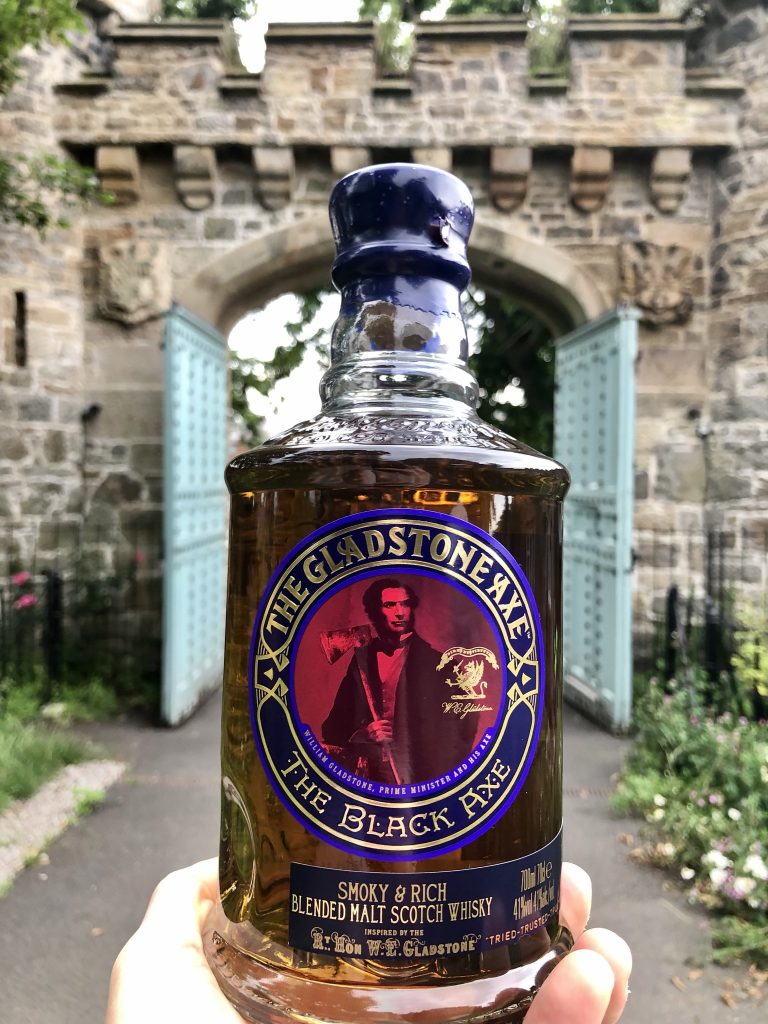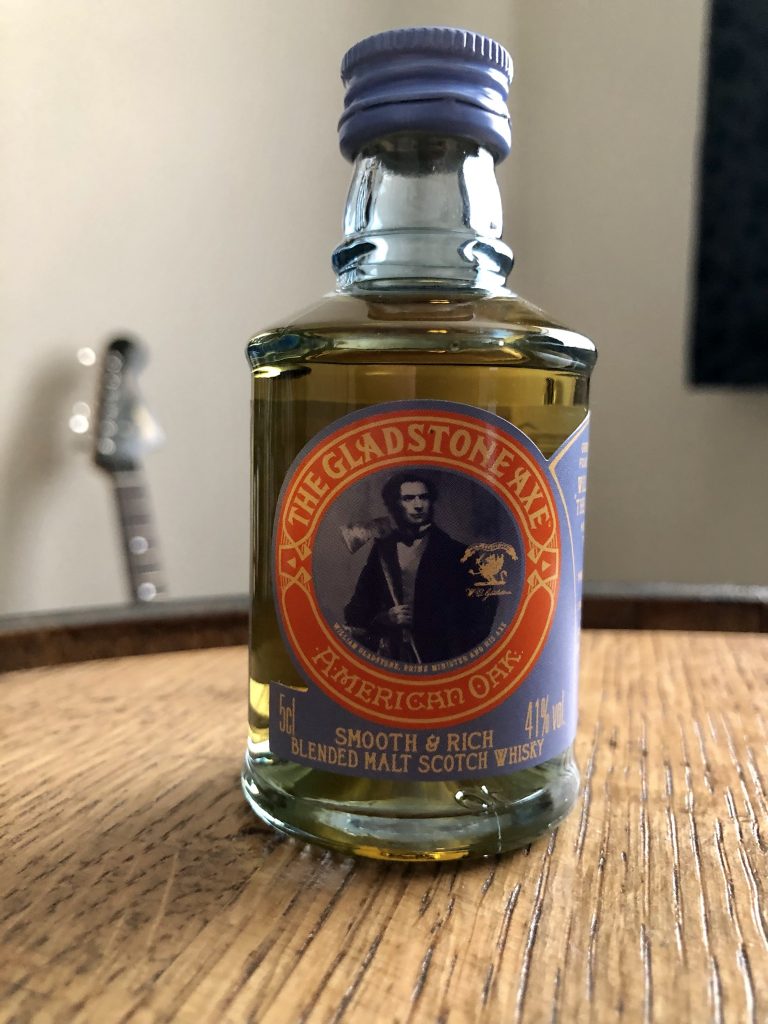Gladstone Axe Blended Malts

Blended Malt is a category of whisky which has been largely underrated, but it starting to gain in popularity with whisky fans. There are some excellent blended malts on the market helping build this reputation, of which I would recommend the Berry Bros. Classic range, and Douglas Laing’s Remarkable Regional Malts, amongst others.
There are many blended malts on the market which would be single malts, barring a tea spoon of something from another distillery being added to protect the identity of the distillery from which it came. In the case of these Gladstone Axe blended malts, there is no tea-spooning, as they are a combination of 14 Highland and Islay single malts. The American Oak is composed of Highland malts and aged in ex-bourbon casks, while The Black Axe also contains a portion of Islay single malt to give it that smoky profile.
I have a local connection to these whiskies, which is what originally piqued my interest. I have lived locally to the village of Hawarden, and the castle that William Gladstone called home all my life. The above picture was taken by me in front of the castle gates. A lovely place for a walk if you are ever in the area.
Gladstone was a 19th century British Prime Minister, and is the only person to serve four non-consecutive terms in office. He had important links to the Scotch whisky industry too. His father purchased the Fettercairn distillery in 1830, and although they were fairly hands-off as owners – relying on tenants to run the business – it remained in the family’s ownership until 1923. Fettercairn is actually one of the components of the American Oak expression.
He also signed the Spirits Act of 1860, which allowed the blending of Scotch whisky for the first time. A rather important milestone in the industry, and a great reason to have a blended malt bearing his name and image. The brand has been created by his great-great-great grandson, Elwyn Gladstone, founder of Biggar and Leith and Malfy Gin.
Why then is it called The Gladstone Axe? Well, Mr Gladstone enjoyed felling diseased and decaying trees on his estate with his collection of axe’s. People even bought tickets to see him in action, and the axe became a prominent symbol of his political campaigns.
Now onto the tasting;
Gladstone Axe : The Black Axe – Review
Colour : Caramel
Nose : The first thing I get on the nose is juniper and citrus fruits, followed by heather honey, raisin, bitter dark caramel and salty smoked bacon. There’s a hint of burnt rubber and a grassiness too.
Palate : Rich toffee sweetness is soon overtaken by bitter, burnt caramel and charred oak, which seems to then dominate things a little. There’s then some peppery spice, before more of the orange, raisin and heather honey from the nose starts to come through with some coastal salt. As it develops there’s ashy campfire smoke that lingers in the finish, with the pepper spice and a vanilla creaminess.
Conclusions : The nose appeals more to me than the palate. I really enjoy those fruity, honey notes with the fairly subtle, but noticeable smokiness. The palate is a little dominated by bitter, charred oak for my taste. There is still plenty to like here though.
Score : 5/10

The Gladstone Axe : American Oak – Review
Colour : Rich Gold
Nose : Toffee caramel and sweet, sharp apple and pear are the stand out. I’m also getting strawberries and cream and some caramelised orange. It’s very fruity and bright. Then we get malted milk biscuits, damp hay and herbal tea.
Palate : There’s a sweet, fruity, creaminess on the palate. Apple pie with crème anglais rather than custard, along with some citrus fruit. Bitter caramel then comes through, with honey, peppery oak spice and ginger. The peppery oak lingers , but the bitter subsides as the creaminess returns in the finish with some salt.
Conclusions : The balance on the palate is better here in my opinion. The bitterness doesn’t dominate and is soon replaced by the cream and the returning fruit. On the nose we are getting lots of great fruit aromas, which work really well with the malty, grassiness. I’m enjoying this one plenty.
Score : 7/10
Final thoughts : These are both decent sippers, but the American Oak is my clear favourite. The balance of the sensations feels better on the palate and the individual flavours aren’t dominated by anything singular.
Both are presented at 41% ABV, and I would guess have been chill filtered. I’d always like to see 46% or above and non-chill filtration with all my whiskies for maximum flavour, but I do appreciate that the price would then have to rise in turn. The embossed glass bottle and wax seal, with the chunky wood and cork stopper are a nice touch to the presentation.
At time of writing, both can be had for £26.95 via The Whisky Exchange, which is good value, especially for the American Oak expression. The usual price for both is around the £30 mark.
Many thanks to Elwyn Gladstone for kindly giving me the opportunity to try these blended malts
